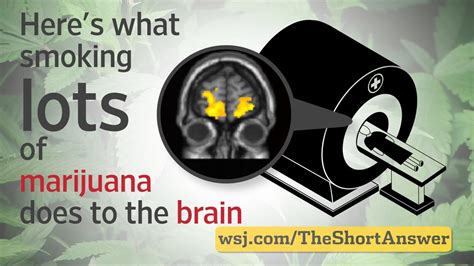While marijuana may be increasingly legal, the question arises: Is it safe for our brains? Recent research from various esteemed institutions, including Harvard Medical School and others, has shed light on this controversial topic, revealing some concerning findings.

Firstly, it’s essential to understand that by law, marijuana is defined as a cannabis plant with more than 0.3% THC by weight, differentiating it from hemp, which contains 0.3% or less THC. This distinction is crucial as THC is the primary psychoactive component in marijuana.
The impact of THC is significant, especially on memory. It operates by attaching to receptors in brain regions critical for memory formation, such as the hippocampus, amygdala, and cerebral cortex. However, the extent of long-term marijuana use, either for medical or recreational purposes, on cognitive functions remains a topic of debate.
Research suggests that long-term cannabis users may experience a decline in IQ, averaging a 5.5 point drop from childhood. There’s a noticeable deficit in learning and processing speed, compared to non-users. Moreover, the frequency of cannabis use seems to correlate with the degree of cognitive impairment, indicating a possible causal relationship.
Another concerning aspect is the effect of marijuana on reward processing. Early exposure to THC can alter the perception of rewards in the brain. Studies, including those on animal models, indicate that THC exposure affects the opioid system, which is responsible for the feeling of pleasure in response to rewards.
In young adults and adolescents, the situation appears even more worrying. The brain, still in development, is particularly susceptible to THC’s effects. THC binding to brain receptors can impede the formation of new synaptic connections, crucial for learning and cognitive abilities. As recent findings suggest, this can have long-term implications on brain development and function.
However, it’s not all negative. For instance, a study from Stanford University School of Medicine found that a marijuana-like substance in the brain can have beneficial effects, such as calming seizures. This substance, 2-arachidonoylglycerol (2-AG), mimics the psychoactive component of marijuana and highlights the complex nature of cannabis and its derivatives.
In conclusion, while the legalization and acceptance of marijuana are growing, it’s crucial to approach its use with caution. Especially among adolescents and young adults, the potential risks to brain development and cognitive functions cannot be overlooked. As research continues, it’s vital to maintain a balanced perspective, acknowledging both the potential therapeutic benefits and the risks associated with marijuana use.